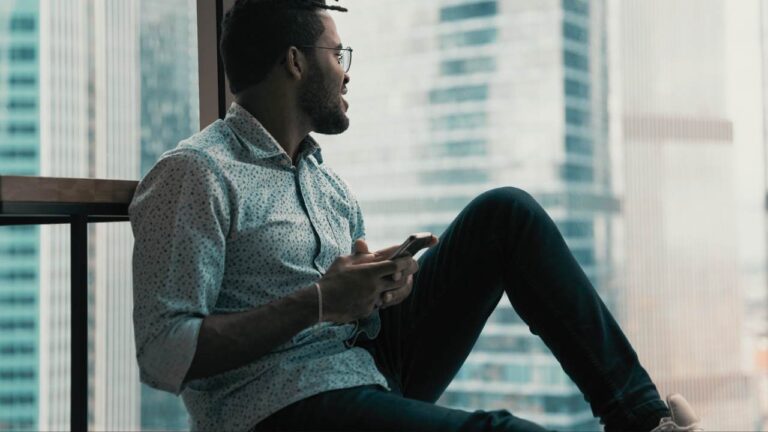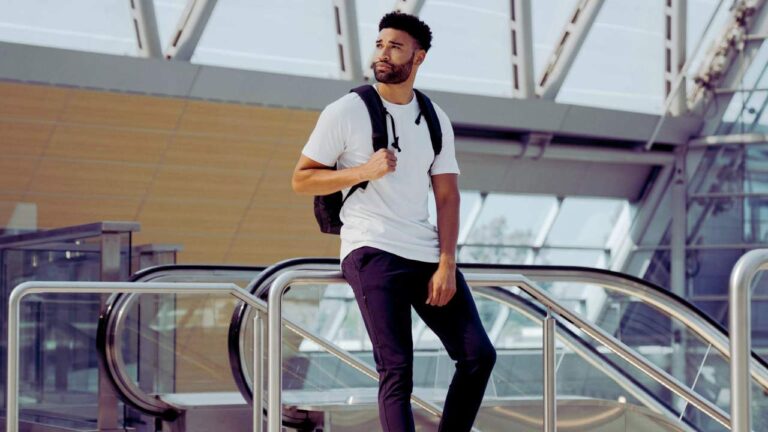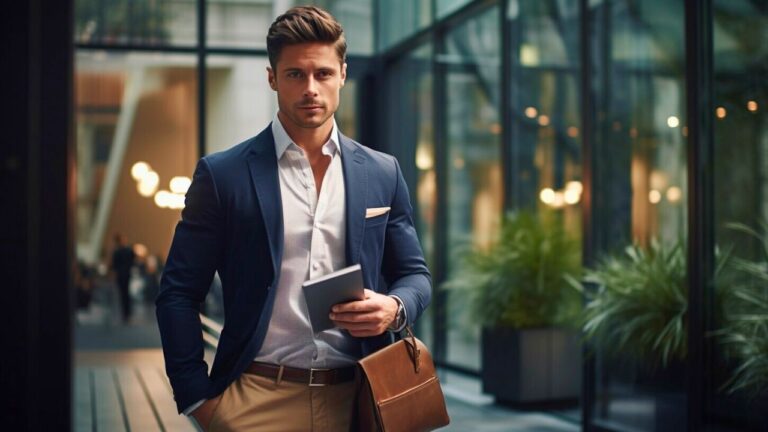The Impact and History of Business Casual in the Workplace

Business Casual in the Workplace Has Revolutionized Office Culture
The History of Business Casual Attire
Business casual attire has become a staple in the modern workplace. It’s a style that’s evolved from the stiff, formal suits of yesteryears to a more relaxed yet professional look. This evolution didn’t happen overnight. It was a gradual shift, influenced by societal changes, economic factors, and the ever-evolving fashion industry.
The journey of business casual is fascinating, filled with twists and turns. It’s a story of how a relaxed Hawaiian tradition could shake up the corporate world’s stiff upper lip and how a simple pair of khakis could redefine professionalism.
Key Insights
- Business casual is a lifestyle, not just a dress code. It’s about balancing professionalism with comfort, individuality with conformity, and work with play. It’s a statement that says, “I take my work seriously, but I don’t take myself too seriously.”
- Brands are combating the stigma associated with business casual. Despite some circles viewing it as too laid-back or unprofessional, brands are proving that it’s possible to be both comfortable and professional, showing that business casual is not a compromise but a choice.
- The impact of business casual on workplace attire is significant. It has transformed how we dress for work, how we think about work, and even how we live our lives. It’s blurred the lines between work and play, formal and casual, and has made work a little less formal, more comfortable, and much more human.
- The future of business casual is evolving with the changing work environment. As remote work, flexible hours, and the gig economy reshape our work lives, business casual will adapt and reflect these changes. It’s not a static concept but a reflection of the times.
- Business casual is here to stay. It’s not just a trend but a revolution. As the work environment continues to evolve, so too will business casual. But one thing is certain: it’s a revolution just starting.
The Shift from Formal to Casual in the Workplace
The shift from formal to casual attire in the workplace was a slow and steady one. It started with the tech boom in the late 80s and early 90s when Silicon Valley startups began to ditch the traditional suit and tie for something more comfortable. This shift was not just about comfort but also about breaking away from the old guard and fostering a culture of innovation and creativity.
The trend quickly caught on, and soon, even traditional corporations started to loosen their tie knots. The shift was not without its critics, but the wave of change was too strong to resist. The workplace was evolving, and so was its dress code.
The Origins of Business Casual
The Concept of “Casual Friday”
The origins of business casual clothing for men can be traced back to a tradition that started in the mid-20th century – Casual Friday. The idea was simple – allow employees to ditch their formal attire and dress down on Fridays. The concept was initially met with resistance, with many fearing it would lead to a decline in professionalism. But as companies started to see the positive impact on employee morale, the concept of Casual Friday started to gain traction.
The Role of the Hawaiian Garment Industry and “Aloha Friday”
While Casual Friday was slowly catching on on the mainland, a similar trend occurred in Hawaii. In the late 60s, the Hawaiian garment industry launched “Aloha Friday,” a campaign to encourage employees to wear Hawaiian shirts to work once a week. The goal was to boost local fashion sales, but the impact was far more significant. Aloha Friday helped popularize Hawaiian shirts and set the stage for the casual work attire revolution.
The Cultural Statement Behind Casual Attire
Casual attire in the workplace was more than just a fashion statement. It was a cultural statement. It was about breaking away from the rigid corporate hierarchy and fostering a more egalitarian work environment. It was about giving employees the freedom to express their individuality. It was a statement that said, “We value your comfort as much as your contributions.” And that statement resonated with employees, leading to the widespread adoption of business casual attire.
The Spread of Business Casual in the Workplace
The Transition from “Aloha Friday” to “Casual Friday”
The journey from “Aloha Friday” to “Casual Friday” was wild. The laid-back island vibe of Aloha Friday started making waves across the mainland. It was a breath of fresh air in the stuffy corporate world. Employees loved the idea of swapping their stiff suits for something more relaxed at least once a week. The concept was dope, and it spread like wildfire. Before we knew it, Aloha Friday had morphed into Casual Friday, and the workplace was never the same again.
This video from The Modest Man explains the shift from traditional suit and tie dress codes to the more relaxed business casual attire in most office settings. They cover the dos and don’ts of business casual, including what to wear and avoid, such as suits, jeans, and sneakers. It dives into the history of business casual, tracing its origins from Hawaiian Aloha Fridays to its widespread adoption in the 1990s.
It’s a few years old, but I highly recommend watching it.
The Role of the Recession in the Early 1990s
The early 90s was a time of economic downturn. Companies were looking for ways to cut costs and boost morale. Enter business casual. It was a win-win. Employees saved money on expensive formal wear, and companies saw a boost in morale and productivity. The recession, while challenging, played a significant role in pushing business casual from a Friday-only affair to an everyday trend.
The Concerns of Management About Casual Attire
But it wasn’t all smooth sailing. Management had concerns. Would casual attire lead to casual work ethics? Would the office turn into a fashion show? The transition was a balancing act. Companies wanted to maintain professionalism while allowing employees the freedom to express themselves. It was a tricky tightrope to walk, but walk it they did.
The Role of Brands in Promoting Business Casual
The Influence of Levi’s and the Dockers Brand
When it comes to business casual, one brand stands out – Dockers. Owned by Levi’s, Dockers was at the forefront of the business casual revolution. They saw the shift in workplace attire and seized the opportunity. Dockers khakis became the poster child for business casual. They were comfortable, versatile, and looked dapper. Dockers didn’t just ride the business casual wave; they were the wave.
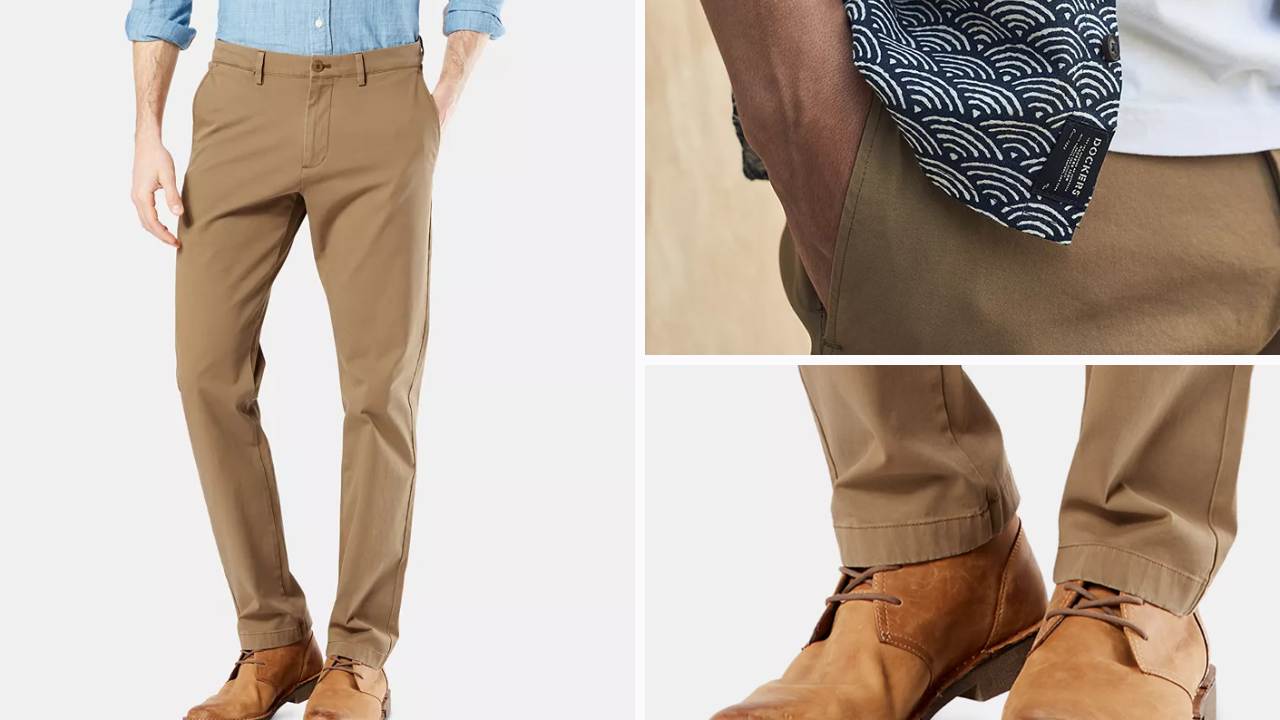
The Marketing Strategies Used to Promote Business Casual Attire
Dockers knew they had a winner on their hands, and they weren’t shy about promoting it. They launched aggressive marketing campaigns targeting businesses. They even created guides for companies making the transition to business casual. Their marketing was as smart as it was bold. They didn’t just sell pants; they sold a lifestyle, a change in corporate culture. And it worked. Business casual was no longer a trend; it was the norm.
The Impact of Business Casual on Corporate Culture
The Acceptance of Business Casual Attire in the Workplace
The acceptance of business casual attire in traditional companies was a game-changer. It was like a breath of fresh air in a room filled with stale, old-school corporate norms. Companies that once clung to strict dress codes began to loosen their ties, literally and figuratively. The shift wasn’t just about clothes but changing the corporate mindset. It was about acknowledging that you can be professional without being buttoned up. It was a fresh take on what it means to be a company in the modern world.
The Perception of Business Casual as a Uniform
But as business casual became more popular, it also became more standardized. It started to feel less like a break from the norm and more like a new norm. Khakis and polo shirts became the new suits and ties. Business casual was no longer a way to express individuality; it was a uniform. But even within this uniformity, there was room for personal touches. A unique belt, a pair of dope shoes, and a statement watch became the new ways to express individuality within the framework of business casual.
The Psychological Impact of Business Casual
How Business Casual Attire Affects Employee Morale and Productivity
The psychological impact of business casual attire is significant. When employees are comfortable in their clothes, they’re more likely to be comfortable in their roles. They’re more likely to feel confident, relaxed, and ready to take on whatever the day throws. The shift to business casual was more than a fashion statement; it was a morale booster. It was a way for companies to say, “We care about your comfort as much as we care about your contributions.”
The Perception of Professionalism in Business Casual Attire
Men’s business professional attire is all about balance. It’s about looking put-together without looking stuffy. It’s about expressing individuality without sacrificing respectability. It’s a delicate balance, but it can make a powerful statement. It can say, “I’m here to do my job, and I’m here to do it well, but I’m also here to be me.” And that’s a pretty sick statement to make.
The Influence of Business Casual on Other Industries
The Impact on the Fashion Industry
The rise of business casual had a seismic impact on the fashion industry. It was like a wake-up call, a signal that the times were changing and the industry needed to change. The demand for formal wear took a nosedive, while the demand for comfortable, versatile, and stylish casual wear skyrocketed. Designers had to adapt or risk becoming irrelevant. The result was a burst of creativity and innovation that reshaped the fashion landscape.
The Creation of New Clothing Lines and Brands
The business casual revolution didn’t just change existing fashion brands; it gave birth to new ones. Brands that catered specifically to the business casual market started popping up. They offered comfortable clothes for a casual Friday but stylish enough for a client meeting. These brands understood that the modern worker didn’t just want clothes that looked good; they wanted clothes that felt good. And they delivered.
Business Casual in Different Cultures and Countries
How Business Casual is Interpreted in Different Parts of the World
Business casual might be a global trend, but its interpretation varies wildly from one part of the world to another. In some countries, business casual might mean a polo shirt and khakis. In others, it might mean a button-down shirt and jeans. The variations are as diverse as the cultures they come from. But despite these differences, the underlying principle remains the same – a move towards a more relaxed yet professional workplace attire.
The Influence of Cultural Norms on Business Casual Attire
Cultural norms play a significant role in shaping what business casual looks like in different countries. In Japan, for example, business attire is still relatively formal, reflecting the country’s cultural emphasis on respect and professionalism. In contrast, with their laid-back culture, countries like Australia have fully embraced the business casual trend. The influence of cultural norms on business casual attire is a testament to the fact that fashion culture is not just about clothes but reflects society.
The Future Trends of Business Casual
The Evolving Definition of Business Casual
The definition of business casual is a moving target. It’s constantly evolving, continuously adapting to the times. What was considered business casual a decade ago might be seen as too formal today. The trend is towards even more comfort and even more flexibility. Think athleisure meets office wear. Think clothes that transition seamlessly from the office to the yoga studio to the coffee shop. The future of business casual is about blurring the lines between formal and casual and between work and life.
Predicted Trends in Business Casual Attire
As for predicted trends, expect to see more emphasis on sustainability. The modern worker is conscious of style, comfort, and environment. Brands that offer stylish, comfortable, and eco-friendly clothes will win the business casual race. Also, expect to see more tech integration. Clothes that can keep you warm in a cold office, calm in a hot one, or even charge your phone. The future of business casual is not just about looking good and feeling good; it’s about living good.
The Impact of Remote Work on Business Casual
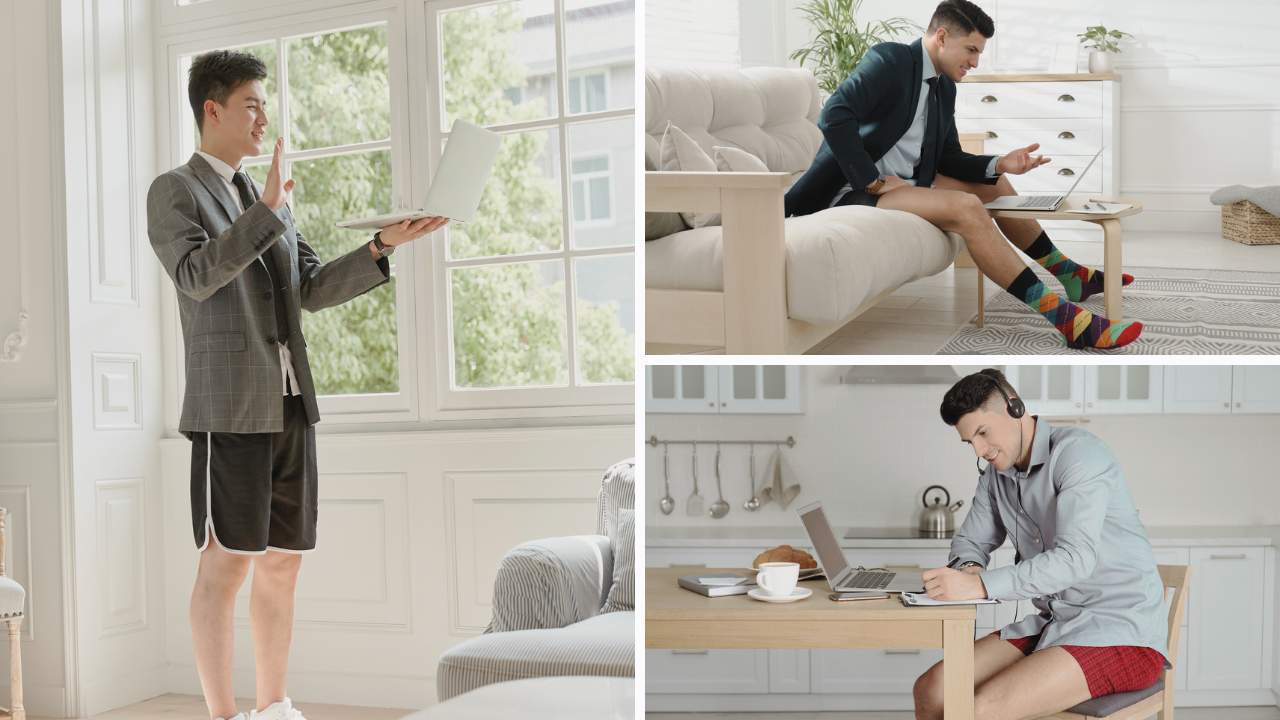
How the Shift to Remote Work Has Changed Business Casual Attire
The shift to remote work has thrown a wrench in the business casual machine. Business casual can mean anything from sweatpants to pajamas when your office is your living room. The focus has shifted from what’s appropriate for the office to what’s comfortable for home. But that doesn’t mean style has gone out the window. It’s just become more personal, more individual. It’s less about fitting in and more about standing out.
The Role of Video Conferencing in Business Attire
Video conferencing has added a new dimension to business attire. It’s all about the top half now. You’re good to go as long as you look professional from the waist up. This has led to a rise in what some call “Zoom fashion” – stylish tops paired with comfy bottoms. It’s a strange mix of formal and casual, public and private. But it’s a mix that perfectly encapsulates the times we live in.
The Current State and Perception
The Perception of Business Casual in the Workplace Today
Today, business casual is more than just a dress code; it’s a lifestyle. It’s a statement that says, “I take my work seriously, but I don’t take myself too seriously.” It’s about finding that sweet spot between comfort, professionalism, individuality, and conformity. It’s about breaking down the barriers between work and play, between who we are and who we’re expected to be. It’s about redefining what it means to be a professional in the 21st century.
The Efforts of Brands to Combat the Stigma Associated with Business Casual
Despite its popularity, business casual still carries a stigma in some circles. It’s seen as too casual, too laid-back, too… unprofessional. But brands are fighting back. They’re pushing the boundaries of what business casual can be, proving that it’s possible to be comfortable and professional simultaneously. They’re showing that business casual is not a compromise; it’s a choice. A choice to be yourself, to be comfortable, to be free.
Wrap-Up: Impact of Business Casual on Workplace
The impact of business casual on workplace attire cannot be overstated. It has transformed the way we dress for work, the way we think about work, and the way we live our lives. It has blurred the lines between work and play, formal and casual, between who we are and who we’re expected to be. It has made work less formal, more comfortable, and more human.
The Future of Business Casual in a Changing Work Environment
As the work environment continues to evolve, so too will business casual. Remote work, flexible hours, and the rise of the gig economy are all reshaping how we work. And as our work changes, so too will our work attire. Business casual is not a static concept; it reflects the times. And as the times change, so too will business casual. But one thing is certain: business casual is here to stay. It’s not just a trend; it’s a revolution. And it’s a revolution that’s just getting started.
FAQ
The concept of business casual originated from the idea of “Casual Friday,” popularized by the Hawaiian garment industry’s “Aloha Friday.” Over time, it evolved and spread across various industries and cultures, significantly impacting workplace attire.
Initially, some circles saw business casual as too laid-back or unprofessional. However, its perception has significantly changed, now viewed as a balance between comfort and professionalism.
Brands have played a crucial role in promoting business casual. For instance, Levi’s and the Dockers brand have significantly influenced the acceptance of business casual through their marketing strategies.
Business casual has transformed corporate culture by promoting a more relaxed and comfortable work environment. It has been accepted in traditional companies and is often perceived as a uniform.
The future of business casual is expected to evolve with the changing work environment. Trends predict a focus on sustainability, tech integration, and personal style, reflecting the shift towards remote work and flexible hours.
The shift to remote work has changed business casual attire, focusing on comfort and individual style. The rise of “Zoom fashion” – stylish tops paired with comfy bottoms – is a testament to this change.
The interpretation of business casual varies across different cultures and countries, influenced by cultural norms and societal expectations. It’s a testament to the versatility and global appeal of business casual.





